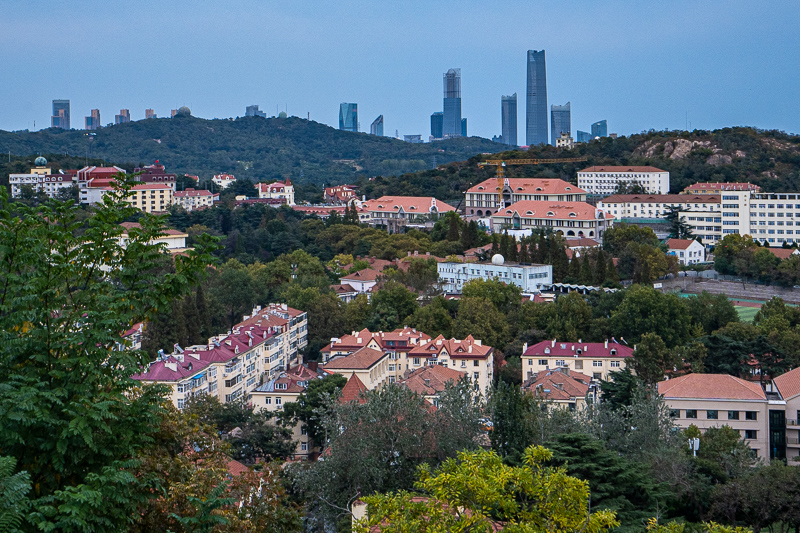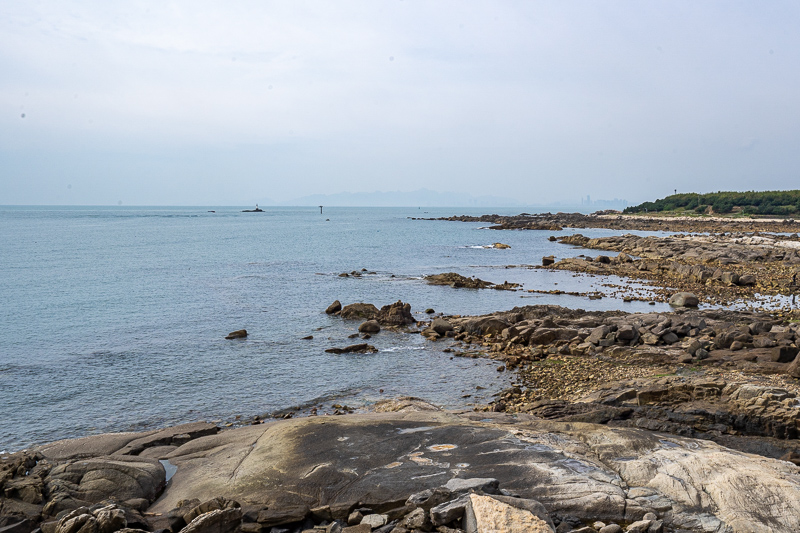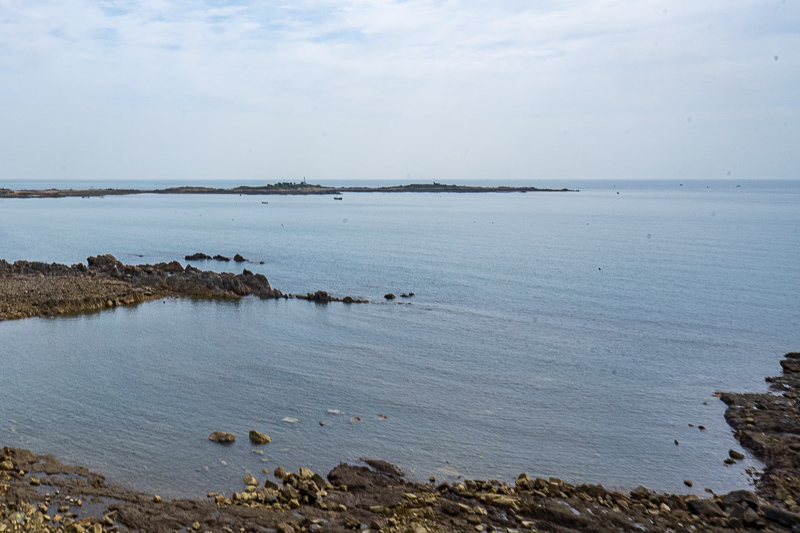本文目录
一、跪求专业的英语翻译
由于地域不同、历史不同、文化背景不同,两个民族对同一事物的理解也存在着很大差异。有些内容在原语国家可能尽人皆知,但外国人却一无所知。在这种情况下,对原文中一些带有原语文化色彩和历史背景的重要信息,就可以添加解释性翻译,将这部分知识补充出来,避免译语读者的误解甚至不解,做到内外有别。例如:
例1.林子的边上原来有一个洞,传说白娘子曾经在这里修炼。
Near the forest there once was a cave which was said to be the very place where Lady White, the legendary
heroine of The Story of the White Snake, cultivated herself according to Buddhist doctrine.
这句话如果完全按照原文翻译,可译作:Near the forest there once was a cave which was said to be the very place where Lady White cultivated herself。这样的译文外国人也能看懂,但很可能产生不解:中国的怀特太太是谁?为什么会在一个不足一平方米的洞里修炼?添加了legendary heroine of the Story of the White Snake,游客不但容易理解,还会对传说故事有所了解,从而提高了旅游兴趣,加深景点印象。在实践中甚至还不时见到译员将整个故事进行介绍的情形。
在旅游翻译中,传统节日也经常需要类似的解释性翻译。特别是当游客对传统节日、风土民俗很有兴趣时,节日的来历和习俗就成了十分重要的补充内容。比如傣族的“泼水节”就可以译作Water- Sprinkling Festival—an important festival for the Dai nationality to wish everyone happiness by splashing water to each other;“端午节”也可以译作Dragon Boat Festival—a festival to memorize Quyua—a famous poet and statesman of Chu Kingdom in the Warring States Period, who finally killed himself by plunging into the Miluo River on the fifth day of the fifth lunar month in the year BC 295)。
从理论上说,增添的内容可以很广泛,只要是与原文相关或理解原文内容所需要的背景知识都可以加入,比如历史年代,生卒时间,人物身份及其历史贡献,地理位置,音译名称在原文语言中的含意等等。但是在实际工作中,翻译的侧重点、游客兴趣、必要性以及时间等因素等却往往限制了增添的内容和详略程度。
中国人在描写完一个景色之后,常会引用一段名人的话或者中国古诗作验证,这样会让读者或听者加深印象,并从中得到艺术享受。可是这类补充性信息对外国人和译员来说,却往往是不大不小的负担。甚至有时候这些描述不但对原文理解没有帮助,还会让游客更觉糊涂。在旅游翻译时,如果没有特别目的和要求,这样的文字常可删去。
另一种情况是,汉语在介绍美景时倾向于使用华丽的词藻和各种各样的修辞格,甚至几个连用的词表示的都是类似的意思。在英语口语中,这种华丽并不实用,意义相似甚至雷同给人的感觉也不一定美,所以翻译的时候可做适当的删减,只要把美好的感觉传达给客人就可以了。
比如在一个上海桂花节的文字介绍中有这样一段话:
例2.这里有满树金花、芳香四溢的金桂;花白如雪、香气袭人的银桂;红里透黄、花多味浓的紫砂桂;花色似银、季季有花的四季桂。各种桂花竞相开放、争妍媲美成都兼职导游。进入桂林公园,阵阵桂香扑鼻而来。
The Park of Sweet Osmanthus is noted for its profusion of osmanthus trees. Flowers from these trees in different colors are in full bloom, which pervade the whole garden with the fragrance.
原文中对各种桂花的名称和特点作了详细介绍,词藻华丽、句式整齐,读起来让人身临其境、沁人心脾。但对现场翻译来说,费尽心思去翻译这些词句显然是得不偿失。试想一下,在那繁花似锦的桂林公园里,还有什么溢美之词可以比得上那桂香宜人的自然之美?这里的译文就将四种桂花的名称全部略去不提,描述语言也高度概括,虽然在修辞效果上有一定的损失,但在口译实践中却不失为一种较好的方法。
例3.对于久居在一个城市的人,放下经年累月循环往复的工作,带上家人,或约三两好友,到百里千里之外的地方走走看看,总是最有吸引力的选择。况且,又逢秋高气爽的季节,每年的国庆长假让人心驰神往的,就是------去外地、游山水。
不过在这样的旅游旺季出门难免会碰到诸如车牌、机票难卖、住宿紧张或票价上涨、热门景点人山人海等问题,让你有遭遇“人灾”的烦恼。所以,选定方向和地点、提前做好各种准备,是保证出游好心情的关键。
Getting out of town is a great way for urban residents to celebrate the National Day holiday, especially those who want to spend quality time with their families.// But many people will have the same idea and some difficulties with your trip that can be expected such as a shortage of train tickets, crowded hotels and transit depots.// So you’d better take all the possibilities into consideration before you begin your tour.// Carefully developing a travel plan can ensure you have a better trip.
分析原文语境,知道这是一则旅游广告,作者适当采用了“煽情”的手法,向读者巧妙地传递广告意欲表达的旅游商品信息。翻译时译者只要抓住这一意图,将其中的主要信息分解出来,结合考虑英语广告规范,以简洁明了为宜,对原文内容进行了大幅度删减,短短四句便囊括了原文长长两段的内容,语义更为浓缩集中,一目了然,不但能将原文的实际内容在译文中正确表达,而且加强了译文效果。
在旅游翻译中,有些名词、术语是该国家或该地区特有的,如果直接按字面翻译,游客根本听不懂,这时就不得不改变说法。例如,在成都武侯祠的介绍中有这样的句子:
例4.刘备章武三年病死于白帝城永安宫,五月运回成都,八月葬于惠陵。
Liu Bei died of illness in 223 at present-day Fengjie county of Sichuan Province and was buried here in the same
这句话想让普通的外国游客弄明白并非易事,其中的“章武三年”和“白帝城”就是两个难点。如果不是对中国历史有相当的了解,这里的时间和地点都毫无意义,不妨考虑改变说法,换用公元纪年和今天的地名,同时略去较为次要的“五月运回成都”。
有一篇西班牙萨贡托市的旅游小册子在翻译的时候对原文的内容进行了适当的调整和改写。由于原文用大量篇幅介绍了该市重工业发展得景象,对于想逃离工业污染寻求西班牙阳光的西方人而言,这一宣传只会适得其反。因此,为了有效实现旅游翻译中的“诱导”功能,对本文中这一部分内容只能“适当重写”。这就告诉我们,翻译时的调整和改写要切合旅游翻译的实情,传递信息,诱导行动,雅俗共赏,唤起受众应该是旅游翻译最根本的目的。旅游翻译的首要标准应该是译语的“可接受性”,包括可理解度、文化上的接受心理以及内容上的吸引力三个方面,就是说译语应该具有较好的表达力、亲和力及趣味性。
语言和文化差异在旅游翻译过程中应该引起充分重视。不同国家的语言、风俗、兴趣等多有不同,在旅游翻译中应该细心甄别、求同化异、查漏补缺。
就语言差异来说,忽视的后果就是产生Chinglish。事实上,在旅游翻译领域这个问题十分严重。例如我们经常可以见到“热烈欢迎……”被译成“Warmly welcome…”。虽无语法错误,但听起来却很是别扭,不如改为。“小心路滑”有人译为!这就不“A warm welcome to…”“Notice: The roads are very slippery”符合英文的标语习惯,可以改为“Slippery Road(Be Careful)!”。如果是室内,还可改为“Caution:Wet Floor!”
文化上的差异和缺失也往往是翻译的难点,弄不好还会在无意中得罪了客人。最有趣的是living guests,这是一家酒店通知上对“住宿的客人”的表达。谈到这个表达法之前,我们先来听段对话,是一位外国语学院的学生和一位来校参观的美国旅游者的谈话:
Student: Where do you live?(学生:你住在哪儿?)
Tourist: I live in California.(旅游者:我住在加利福尼亚州。)
Student:… Where are you staying?(学生:……你呆在哪儿?)
Tourist: I’m staying at the International Hotel.(旅游者:我呆在国际饭店。)
对话中这个学生很快意识到live和stay的区别而改口。他原来想知道对方住那个饭店,但由于汉语中表示长期定居的“住”和短期逗留的“住”是一个字而受到干扰。所以,要指出是“住宿的客人”,应用staying guests,即使酒店里有长期居住的客人也不该用living guests,因为它还表示“活着的客人”。宾馆又不是殡仪馆,因而不会有dead guests!
文化上的缺失比如“秦始皇”仅仅译成Qin Shihuang,可能外国游客就无法理解,如果适当补充历史背景,增译为“Qin Shihuang, the first emperor in the Chinese History who unified China in the year BC221.”就更能被外国游客所理解。
如果懒于思考,只看文字的表面意义,不管景点的实际情况,或者根本就不懂相关的知识都可能造成错误的结果,给外国游客造成错误印象,甚至影响到景点的形象。
例如“草堂寺”中的“草”就有人简单译成straw,给人的感觉是这个cottage全是用straw建的,没有别的材料。其实我们知道,这种茅草屋只有房顶是用茅草覆盖的,所以不妨将其译成thatched cottage更好一些。
又如第一节提到的“桂林公园”,其英语译名至少有“Guilin Park”、“The Park of Sweet Osmanthus”和“Laurel Park”三个,哪一个更好呢?首先,句中提到的公园位于上海徐汇区的漕宝路桂林路,显然第一个名字会让人产生误解,以为是在桂林(汉语中虽然也有此嫌疑,但毕竟含有“桂花林”的意思,可算作双关)。再看后两个译名:细究起来,Sweet Osmanthus指木犀科的“桂花”, Laurel则是樟科的“月桂”,是两类完全不同的植物。根据实际情况和后文的品种描述,可以断定第三种译法也是错误的。
再如有游客谈到一次去New Otani(长富宫)饭店,进门后问一位接待员:Excuse me, where’s the restroom?她毫不犹豫地手一指,游客抬头望去,原来是摆着沙发椅的供客人休息会客的地方。显然,这位接待员没明白我要去的不是休息室,而是厕所,用restroom取代toilet听上去很委婉;有些美国人还称厕所为comfort room,这不仅委婉,而且诙谐。公关场所的休息处是lounge或lobby.
旅游翻译既属于口译范畴,又不同于一般的口译,它涉及多种学科,自然科学、社会科学、天文地理、风土人情、传说典故、诗词歌赋等等各方面,因此对译者的要求很高。
早年曾有一名翻译人员不明白“释迦牟尼涅磐”这个图片中的“涅磐”二字,一位随行人员告诉他“简单的说,就是释迦牟尼逝世的意思。”于是他就将此图片说明译作“Sakyamuni passing away”。
而实际上,涅磐并不仅仅是pass away,而是佛教中用来指一种生死轮回之后获得的精神境界,是佛教修行的最高境界,涅磐是梵文Nirvana的音译。
又如:南京雨花石博物馆的翻译就存在着类似的问题。“雨花石”的“石”到底用哪个词好呢?有人建议用pebbles(small stone made smooth and round by the action of water,即小圆石或卵石),从外形上说这个词好像比较合适。但它在外国人看来有肮脏的含义,因此pebble应该放弃。Stone是石头的总称,而且除了表示石头外,还可以表示precious stone,即珍贵的石头。所以最终还是选用了很常用的词,译为“Yuhua Stone Museum”。
还有,在一般的导游活动中,“碑林”可以译为“Forest of Stone Tablets”,面对考古专家时也可以选用更为艰深的“Forest of Steles”。因为Steles是希腊考古学方面的一个词,专指刻有文字或图案的石板、石柱。普通的旅游者几乎都不知道这个词。甚至有一位澳大利亚的语言学专家看过西安碑林的画册和导游词后也指出,stele这个词他是借助词典才知道的。这样的译文虽然更忠实于原有名称,但极少有人能懂又有何用?所以,有时候旅游翻译中还要根据翻译对象和目的调整专有词汇的表达方式。同样的道理,“新石器时代”和“旧石器时代”也不一定非要译为“Neolithie Age”和“Paleolithic Age”;“New Stone Age”和“Old Stone Age”完全可以胜任同样的任务。如果碰到更为复杂的情况,
就需要更多的知识积累和积极思考了。
由此可见,旅游翻译不但要力求准确、充分体现原语的信息及语言风貌,更要起到扩展知识、激发兴趣的作用。
二、成都旅游景点介绍英语导游ppt 成都的旅游景点英语介绍
成都市各大旅游景点英文名称是什么?
成都市的旅游景点的英文名称如下:
锦里古街:Jinli Ancient Street
都江堰水利工程:Dujiangyan Irrigation Project
世界自然遗产:the World Natural Heritage
杜甫草堂:Dufu's Thatched Cottage
自贡国家恐龙地质公园:Zigong NationalGeological
自贡大山铺:Dashanpu of Zigong
三星堆遗址:the site of Sanxingdui
世界自然遗产:the World Natural Heritage
杜甫草堂:Dufu Thatched Cottage
青羊宫:Qingyang Taoist Temple
成都(Chengdu),简称蓉,四川省会,1993年被国务院确定为西南地区的科技、商贸、金融中心和交通、通讯枢纽,是设立外国领事馆数量最多、开通国际航线数量最多的中西部城市。2015年由国务院批复并升格为国家重要的高新技术产业基地、商贸物流中心和综合交通枢纽,西部地区重要的中心城市。
成都位于位于四川盆地西部,成都平原腹地,成都东与德阳、资阳毗邻,西与雅安、阿坝接壤,南与眉山相连。成都市下辖锦江区等10区5县,代管4个县级市。2014年末,成都市辖区建成区面积604.1平方公里,常住人口1442.8万人。
成都是“首批国家历史文化名城”和“中国最佳旅游城市”,承载着三千余年的历史,拥有都江堰、武侯祠、杜甫草堂、金沙遗址、明蜀王陵、望江楼、青羊宫等众多名胜古迹和人文景观。
联合国世界旅游组织第22届全体大会将于2017年、第22届世界航线发展大会将于2016年在成都举办。
As is known to all, the tourism resource in Sichuan province is very abundant and you know, Chengdu is a city makes you reluctant to leave once you're here!
I strongly recommand you to go to the Luodai Old Town. there you can appreciate the local old style architecture and relax ourself in the happy village near the old town, where the homemade countrystyle Sichuan food is very delicious.洛带古镇哈
跪求一篇。成都任何一个景点的英文导游词。谢谢。
Located in the south to dujiangyan qingcheng mountain, 66 kilometers away from chengdu. The mountain forest green, with green jade, shape if wall, it is called qingcheng. QuanShan scenery beautiful, have"qingcheng world quiet" said. But because now visitors many, has the name, but going on it, and don't waste trip. Mount qingcheng Taoist is one of the cradles of our country. The eastern han dynasty last years, Taoism in the mountain ZhangDaoLing founder set the altar missionary, and gradually developed into a Taoist resort. QuanShan had Taoism palace, the view of more than 70 seats, now still remains in 38. Among them, the famous: JianFuGong, tianshi cave, three island stone, the patriarch temple, chaoyang hole, the qing and natural pictures, the golden whip rock stalagmites, ZhangRen mountain peaks, etc.
青城山位于都江堰市本南,距成都66公里。山上林木葱茏,峰峦叠翠,状若城廓,故称青城。全山景物幽美,有"青城天下幽"之称。不过由于现在游客多了,已经名不符实了,但到此一游,也不枉此行。青城山是我国道教发祥地之一。东汉末年,道教创始人张道陵在此山设坛传教,逐渐发展成道教胜地。全山曾有道教宫、观70余座,现尚有遗迹38处。其中,著名的有:建福宫、天师洞、三岛石、祖师殿、朝阳洞、上清宫以及天然图画、金鞭岩、石笋峰、丈人山等。
大家好,我是导游张智_。今天,我要带领着大家一起到五岳之一的泰山观光。
泰山古称岱宗,它位于山东省东部,华北大平原的东侧,面积426平方公里,海拔1545米。泰山雄伟壮丽,历史悠久,文物众多,以“五岳独尊”的盛名称誉古今。巍巍泰山就像一座民族的丰碑屹立于中华大地,举世瞩目。
再往上走,大家就到了主峰部位。主峰的东侧有一个观日石。在原来,传说古人因为爬山时很多人看不到日出,人们齐心协力从山上搬来一块大石头,大家把它放在观日点,人们站着或者坐在上面,就看到了日出。主峰的西侧有一块石碑,上面雕刻着四个鲜红的大字:“五岳独尊”,这四个大字时古代文学家孟子(孟轲)说出的,意思是:“五岳之中,排名榜首”。从古至今,这四个字成了千古佳来到泰山面前,站在迎客松下,隐隐约约可以看到十八盘。因为古人说:“一叶障目,不见泰山”。十八盘的台阶共1594级。高约400多米,可以说是泰山的“脊梁”。如果你从下面的中天门顺着十八盘一直登上南天门,你就会感觉到小腿肚子一直在不停的打哆嗦,这是因为十八盘很陡。登上了南天门,大家先休息一下,留个影,休息一会我们再向上爬。大家请继续跟我向上爬。爬上一小段距离以后,便到了天街。天街位于泰山海拔1250米的高空中。因为天街已经话。再往上走,就到了泰山的最高点——玉皇顶。从玉皇顶的观望台往下走,就看到了泰山的全景。正如大诗人杜甫在《望岳》一诗中所讲:“会当凌绝顶,一览众山晓”。游客们,泰山的景色确实很雄伟,希望您带着亲朋好友再来光临泰山!(完)
写作思路:根据题目要求,多方面介绍成都的风景特色。
Chengdu, located in Sichuan Province, is a beautiful place.
成都位于四川省,是一个美丽的地方。
The city is exquisitely decorated and well-designed, attracting a large number of tourists every year.
这座城市装饰精美,设计精良,每年吸引大量游客。
Chengdu has a large number of tourist attractions, such as Wangjiang Park, dujiangba, etc. these attractions are easy to reach, and the cost is not high.
成都有大量的旅游景点,如望江公园、都江坝等,这些景点都很容易到达,而且成本不高。
And with the rapid development of economy, Chengdu has become an international metropolis.
而且随着经济的快速发展,成都已经成为一个国际大都市。
Why don't you come to this magical city to have a rest and have a look at the beautiful scenery?
 成都旅游景点介绍英语导游ppt 成都的旅游景点英语介绍)" title="英语导游欢迎成都(成都旅游景点介绍英语导游ppt 成都的旅游景点英语介绍)" >
成都旅游景点介绍英语导游ppt 成都的旅游景点英语介绍)" title="英语导游欢迎成都(成都旅游景点介绍英语导游ppt 成都的旅游景点英语介绍)" >
为什么不到这座神奇的城市来休息一下,看看这些美丽的景色呢?
求成都著名景点导游词英语,100词以内,带中文
Myhometown---chengdu,nowfamousandwell-knownopeneconomies.Herneatgraceful,developedeconomy,abundant,makeapersonyearning.Herlonghistory,culture,mahoganypanelledsplendour,keepthecultureisonesacred
四川是西南、西北和中部地区的重要结合部,是承接华南华中、连接西南西北、沟通中亚南亚东南亚的`重要交汇点和交通走廊。下面是百分网我给大家整理的四川英语导游词,仅供参考。
四川英语导游词【篇一】:四川峨眉山英语导游词
Everybody is good! I am your tour guide, Duan Reyu, today I'll explain emei mountain scenery culture for everyone.
Emei mountain, mount emei in sichuan province in China, the highest peak 3099 meters above sea level, is a state-level scenic spot. Emeishan level field ridges, with beautiful natural scenery, rich buddhist culture, become people worship, sightseeing resort course.
Higher than that of emei mountains of guilin, show. Jinding emei mountain there are 10 g: such as"auspicious light" and"guitar frog play", etc. People also created many new landscape. Standing on the mountain, panoramic view of tsing yi jiang. Placed on the top of emei, true have"to see the mountains small" feeling.
In the emeishan plant's growth, is the famous emei fir, frame nan, etc. Have a great variety of orchids, azaleas and so on, these plants to the all kinds of animals have created a natural paradise. Joy Shared with others especially emei mountain, has become a mount emei is famous for its unique landscape"live" in China and foreign countries.
Mount emei is one of China's four major buddhist shrine. The emeishan gradually become influence deeply buddhist holy land of China and the world. These rich buddhist culture heritage is a cultural treasure of the Chinese nation
Therefore are gems of library, known as"buddhist" seazan. Mount emei to legend behind one thousand, eternal charm.
The trip to mount emei has ended, and have the opportunity to you with your family come to visit mount emei beautiful natural scenery and the great rich buddhist culture.
四川英语导游词【篇二】:四川成都英文导游词
Chengdu is the capital of Sichuan Province and an important industrial, commercial and financial city in southwestern China.
Located in one if the country's richest agricultural plains,Chengdu has 12,390sq.km. By rail,Chengdu is 2,048 km from Beijing and slightly over 2 hours by air of Beijing. Itcan also be reached by a less than 20 hours train rides with about 250 Km of tunnels. Chengdu has direct domestic and interna flights from elsewhere in China,Hong Kong and some neibouring countries. With an altitude of 500 meters, it has a temperate climate and abudant rainfall in summer. The population of Chengdu is about 9.60 million-divided among 8 districts,4 outlyihg cities and 8 counties. About 1.4 million people reside in the city center.
chengdu has a history of over 2000 years. century BC,the king of Shu moved his capital to this site.At first Chengdu Was only a county center. The second year it turnek into a metropolis.It developed so fast that the city received the name:Chengdu,which literally meant"becoming a capital". During the Western Han Dynasty(206BC~23AD),the brocade weaving and trade brought so much prosperity to the local area that the government set up a special office in the Southwest of the city to manage brocade weaving and trade business.The city became Known as Jincheng(the Brocade City) afterwards.Another mane was given to Chengdu duringthe five Dynasties Period(907-960)when Meng Chang(孟昶),emperor of the Later Shu State was in power.The emperor loved hibiscus very much,and he had those flowers planted atop the city wall.The hibiscus in blossom made chengdu colorful for miles around.So Chengdu had another name called Furong Cheng(the Hibiscus City).
Dated back to the Qin and Han Dynasties,Chengdu was alresdy one of the five top industrial du was already one of the five top industrial and commercial cities.In theTang Dynasty Chengdu was as prosperous as Yangzhou(扬州),a big city located in the south of China. In the Nouthern Song veloped with several huge markets inside the city.Chengdu even had night markets and particular centers,which had exclusive sales of certain commodities.
Traditionally Chengdu has long been well-known for its many crafts:embroidery,lacquer ware,silver artistry,pottery,bamboo ware,silk weaving,cade are regarded as one of the top four fine silks in china.Near the Du Fu Cottage is a famous embroidery factory where skilled workers stitch out with their meedles silk paintings.the elegant designs are perfect to view from both sides of the fabric.In some other workshops,artisans at work carve intricate and elaborate objects of ivory and jade,design precious silver articles,and weave bamboo into useful and beautiful pieces.these workshops are nowadays a part of the tourist circuit as China opens up to the outside world.
Chengdu was one of the birthplaces of the an-Weng(文翁),head of the prefecture of Shu started centuries saw the cultural development by contribuXiangru(司马相如),Li Bai,Su Shi(苏轼)who them and in return their excellent literature works enabled the local culture to advance.
Chengdu is pleasantly laid out with broad streets and many public parks.Howevey,some older parts of the city still have marrow streets and sculptured wooden houses.Chengdu has many places of interests to see.The highlights for visitors are DuFu's Thatched Cottage,the temple of Marquis wu,Dujiang lrrigation Project and Precious Light Monastery.Besides,local restaurants serve sichuan cuisine,which is as famous as Cantonese food.Not all of the Sichuan food is spicy-hot.Flowe
三、乐山旅游景点英文介绍 乐山英语导游词
Leshan Buddha, also known as Lingyun Buddha, is located at Lingyun Temple on the East Bank of Nanminjiang River in Leshan City, Sichuan Province. It is near the confluence of Dadu River,
Qingyi River and Minjiang River. The Great Buddha is a sitting statue of Maitreya Buddha. It is 71 meters high. It is the largest stone statue on a cliff in China.
Leshan Buddha was excavated in the first year of Kaiyuan in Tang Dynasty(713), and completed in the nineteenth year of Zhenyuan(803), which lasted about ninety years.
Leshan Grand Buddha Scenic Spot, which consists of Leshan Grand Buddha, Lingyun Mountain, Wuyou Mountain and Huge Crouching Buddha, belongs to the national 5A-level tourist attraction and is a part of the world cultural and natural heritage Emeishan-Leshan Grand Buddha.
On October 8, 2018, the Jiuqu Trestle Road of Leshan Grand Buddha Scenic Area was closed before construction began. On April 1, 2019, the preliminary research and survey on rescue protection of the damaged area of Leshan Grand Buddha in Sichuan Province,
which lasted nearly half a year, ended. Leshan Grand Buddha officially"left the customs", and the Jiuqu Trestle Road and the Buddha foot sightseeing platform of the scenic area were reopened.
乐山大佛,又名凌云大佛,位于四川省乐山市南岷江东岸凌云寺侧,濒大渡河、青衣江和岷江三江汇流处。大佛为弥勒佛坐像,通高71米,是中国最大的一尊摩崖石刻造像。
乐山大佛开凿于唐代开元元年(713年),完成于贞元十九年(803年),历时约九十年。
乐山大佛和凌云山、乌尤山、巨形卧佛等景点组成的乐山大佛景区属于国家5A级旅游景区,是世界文化与自然双重遗产峨眉山-乐山大佛的组成部分。
2018年10月8日,乐山大佛景区九曲栈道处已经开始施工前打围封闭。 2019年4月1日,历时近半年的四川乐山大佛残损区域抢救性保护前期研究及勘测工作结束,乐山大佛正式“出关”,景区的九曲栈道和佛脚观光平台重新开放。
参考资料来源:百度百科-乐山大佛
乐山大佛是唐代摩岩造像的艺术精品之一,也是世界上最大的石刻弥勒佛坐像,国家5A级旅游景区。下面是百分网我给大家整理的乐山大佛英语导游词,仅供参考。
The city of Leshan is less than one hour's ride from the Baoguosi Monastery at the foot of Mt.Emei.Leshan is the home of the Giant Buddha at the conflueence of the Min,Dadu and Qingyi rivers.It qualifies as the largest Buddha in a sitting posture in the world.You must board a riverboat for the best view of the Giant Buddha.The massive Buddha was carved out of a cliff face more than a thousand years ago, but now it is still well preserved in good shape, with his full and serene face.
The Buddha is the largest Buddha in China,towering to 71m,with his 14.7m head,and 24m shoulders.The Buddha's ears are 6.72m long, insteps 8.5m broad, and a picnic could be conducted on the nail of his big toe, which is 1.5m long.成都导游屈兰
This carving project was begun in 713.Each summer at that time the Min,Dadu and Qingyi rivers flowed down.As the ghree rivers met,turbu-lent waves strucd each other hard,boats capsized and boatmen vanished.There was a Buddhist monkby the name of Haitong in Lingyun Hill,who saw the situation and was determined to carve a giant Buddha out of the cliff face, hoping that the Buddha's presence would subdue the swift currents and protect the boatmen.Haitong started travelling along the Changjiang river and other areas in China to collect funds for the gigantic carving. Once an evil official attempted to obtain by force the money collected by Haitong.The monk refused him in strong terms.He said,"I'd rather gouge out my eyes than give a penny to you,"The official shouted in anger,"gouge your eye out now!"Haitong resolutely dug out one of his eyes.
The monk's behavior in protecting the funding so greatly encouraged sculptors and other construction workers that the carving work went on smoothly. Unfortunately Haitong died before the completion of his life's work.However, this work continued due to the support of the local people as well as Weigao and Zhangchou Jianqing,the local top military commanders. The word took up 90 years until 803 when it was completed.Since then the Buddha has watched over the river traffic for more than a thousand years to offset the large number of serious accidents in the river. Modern Chinese question whether safer boat gravel is due to his presence or to sime later-day dredging.
As you get close to the Buddha,we can find out some scattered holes im rows around the Buddha.They are remains of so Called the Giant Buddha Pavilion. It was a nine-storied building set up during the Tang Dynasty to shelter the Buddha.It was renamed as the Lingyun Pavilion with 13 stories during the Song Dynasty. Unfortunately it was destroyed by a war during the Ming Dynasty. Since then the Buddha remains outside in the open space.
The Giant Buddha has lasted over a thousand years, and still survives in good shape.Why? First of all, according to the studies on the ancient construction of the Buddha,the cliff face the Buddha occupies enjoys topographical advantages. It is on the southern side of the hill,where verdant trees grow so well as to protect rocks and slope from erosion.Secondly although the Buddha seats bordering on the confluence of the three rivers, the immense statue is carved into the cliff face inside the hill,which alleviate the severe damage by wind and water erosion.Finally there is a water-drainage system,hidden from view.The system starts with 1021 fastened hairs, which conect one another at the bace of the bead.The end of the hairs inter-links the shoulders,joining the simple-patterned robe pleats carved on the body.The hairs,shoulders and pleats naturally reveal a complete system that carries away the entire surface water on the body, where the water disappears underground.It is worth making several passes at the Buddha.From the ferry pier on the island,you climba steep road and through Lingyun Temple to a vantage point for viewing the buddha.You can go to the top,opposite the head, and then descend a short zigzag stairway carved into the cliff to the feet for the top,oppoosite the head,and then descend a short zigzag stairway carved into the cliff to the feet for the different perspective viwepoints.A local boat passes by for a frontal view, which reveals two guardians in the cliff side, not visible from land,Wuyou Buddhist Monastery can be reached in 15 minutes by footpath from the Buddha,which is also from the Tang Dynasty with Ming and Qing renovations,Its layout is very similar to the other monasteries as we mentioned before.Walking along up Wuyou Hill,you can enjoy the quiet and beartiful scenery, The top of Wuyou Hill affords you a vision of an emerald-green tree forest, glazed golden tiles of the monastery roofs and the distant rivers.
It would be a mistake to thind of Leshan as one big Buddha, but it is worth making a trip to Leshan,which will provide you with a pleasant picture made by the ancient Chinese sites and the beautiful nature being combined into a whole.
爱的游客们,你们好!我是你们的小导游——郑涵文。今天,我们游览的是世界上最大的一座石刻像,游客们,你们知道它是谁吗?对了,它就是四川的乐山大佛。走,随我去看看吧!
乐山大佛修凿在岷江、大渡河和青衣江汇合处的`凌云山的临江山崖上,与乐山城隔水相望。
游客们,在我们身旁的就是形象生动、气魄宏伟的乐山大佛。瞧,佛像坐东面西,双眼似睁似闭。它高71米,仅头部就有10米宽,双肩的距离为24米,耳长6米,可藏进几个人。不可思议的是,一只脚背上竟可站100多人!游客们,还要一点你们可能不知道,佛像的头颈背后,筑有完善而巧妙的排水系统使佛像免受山洪冲蚀。所以它被誉为世界艺术珍品。
现在让我给大家讲讲乐山大佛的历史吧。它从唐代开始修凿,人们爬上高山峻岭,攀登悬崖峭壁,一锤一锤地凿,一刀一刀地刻,从公元713年至公元803年,整整化了90年的时间才凿刻完工。佛像经过了1000多年的风霜雨露,至今仍完好无损,安详端坐。
1956年,乐山大佛被四川省列为重点保护文物,而今,它已和我国其他28处景观被列入了《世界遗产名录》,是举世闻名的世界文化遗产。
好了,介绍完了乐山大佛,就让我们一起登上凌云山峰,看看这举世闻名的乐山大佛吧!请不要在佛像上刻字哦。
大家好,欢迎你们来到铅笔俱乐部,现在,我又欢迎你们来到四川,我是你们的导游,我们的第一个目标就是我身后的这座高大的山峰——乐山!
去之前希望大家能注意一下现在请听我说一下:“因为,这时山峰,会很危险,所以请小朋友注意不要乱跑,还有请大家看到了大佛,不要太激动得在上面乱涂乱画,破坏文物,还有不能随地吐痰、乱扔垃圾、随地大小便,如果被保安发现了可是要罚钱哦!到时候,可别说我没说哦!好了现在就和我一起去登山去看看乐山大佛吧!
现在,大家登山了山顶,一定发现了在我背后有一座佛像,不错,这就是驰名中外的乐山大佛,这大佛,有71米长。这这里,被人们称为A4级风景区,古有”上朝峨眉,下朝凌云“之说。么高的大佛,你们知道是谁建造的吗?就让我揭开谜底吧!成都导游排名
相传,唐朝的时候,贵州有一个和尚叫:海通,他是一位很聪明的和尚,他云游四海,很愿为百姓做好事儿,让百姓得福。
一年夏天他来到四川嘉州。听说府城城东凌云山正江水汹涌、波浪滔天,危害生灵。一天,他想去看一看究竟,便攀着岩壁来到凌云山脚。忽见一个壮年男子躺在水边,一动不动左手拿钻,右手拿锤。海通看了,马上把他背了起来,过了好一会儿,那名男子才慢慢苏醒过来。
原来那名男子叫石青,是一个石匠,看海通救了自己,就和海通和其他一些劳动人民一起动手,在上面雕刻了在古今中外鼎鼎有名的乐山大佛。
时间如飞,好了我们该下山了,谢谢你们能和我一起去看乐山大佛,听我讲那些事情,你们满意,我就高兴,欢迎你们下次再来,拜拜!
四川各大旅游景点的英文名字,全面一点,多一点
四川各大旅游景点的英文名字是:
龙潭溶洞位于攀枝花米易县白马镇,距攀枝花104千米,距米易县城26千米,位于龙肘山下、安宁河滨,是省级风景名胜区、国家AA级旅游区。
2、九寨沟(Jiuzhaigou Valley Scenic and Historic Interest Area):
九寨沟位于四川省西北部岷山山脉南段的阿坝藏族羌族自治州九寨沟县漳扎镇境内,地处岷山南段弓杆岭的东北侧。距离成都市400多千米,系长江水系嘉陵江上游白水江源头的一条大支沟。
3、剑门关(Jianmen Pass Beauty Spot):
剑门关风景区是国家AAAAA级旅游景区,国家级风景名胜区,全国重点文物保护单位,国家森林公园,国家自然与文化双遗产,全国100个红色经典旅游景区之一。中国知名旅游目的地,国家文化产业示范基地,全国爱国主义教育基地,四川省自然保护区,四川省地质公园。
4、乐山大佛(Leshan Giant Buddha):
乐山大佛,又名凌云大佛,位于四川省乐山市南岷江东岸凌云寺侧,濒大渡河、青衣江和岷江三江汇流处。大佛为弥勒佛坐像,通高71米,是中国最大的一尊摩崖石刻造像。
峨眉山位于北纬30°附近,四川省西南部,四川盆地的西南边缘,是中国“四大佛教名山”之一,地势陡峭,风景秀丽,素有“峨眉天下秀”之称,山上的万佛顶最高,海拔3099米,高出峨眉平原2700多米。
用一些英文来介绍乐山大佛,并且翻译
乐山大佛地处四川省乐山市,岷江、青衣江、大渡河三江汇流处,与乐山城隔江相望。乐山大佛雕凿在岷江、青衣江、大渡河汇流处岩壁上,依岷江南岸凌云山栖霞峰临江峭壁凿造而成,又名凌云大佛,为弥勒佛坐像,是唐代摩岩造像的艺术精品之一,是世界上最大的石刻弥勒佛坐像。 Sichuan leshan giant Buddha is located in leshan, minjiang river, tsing yi jiang, dadu river sanjiang the confluence at the leshan city and the pearl river. Leshan giant Buddha carved in minjiang river, tsing yi jiang, dadu river HuiLiuChu the rock, minjiang river in southern LingYunShan qixia peak cliff made from the river cut, another name for more Buddha, symbolizes the tang dynasty, is MaYan yuangang images of fine arts is one of the world's largest stone carvings of yuangang symbolizes.











